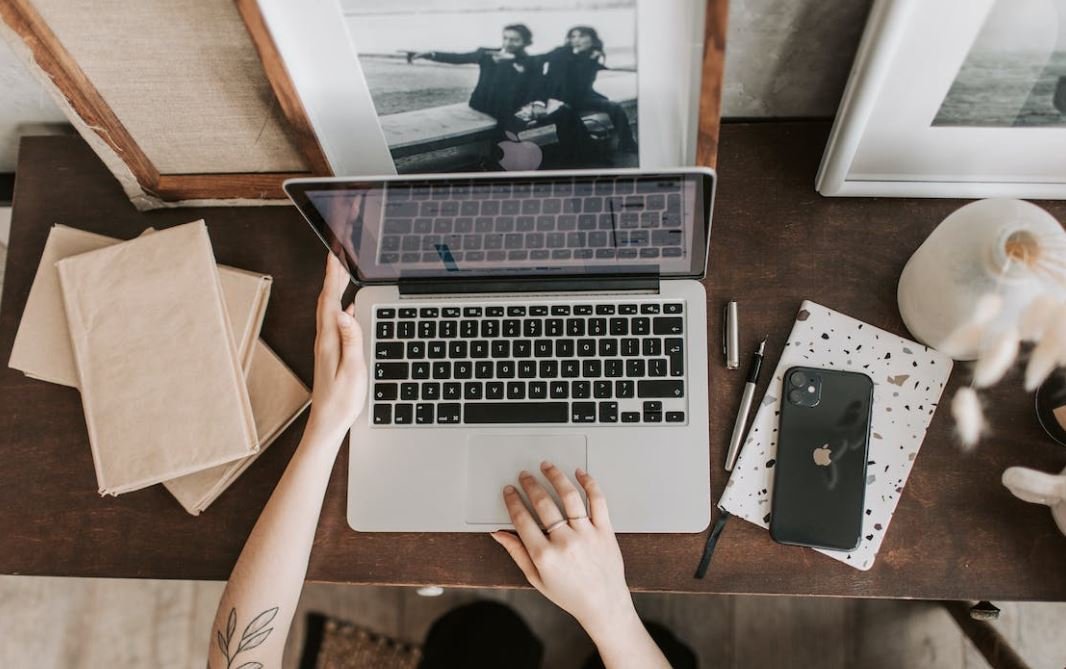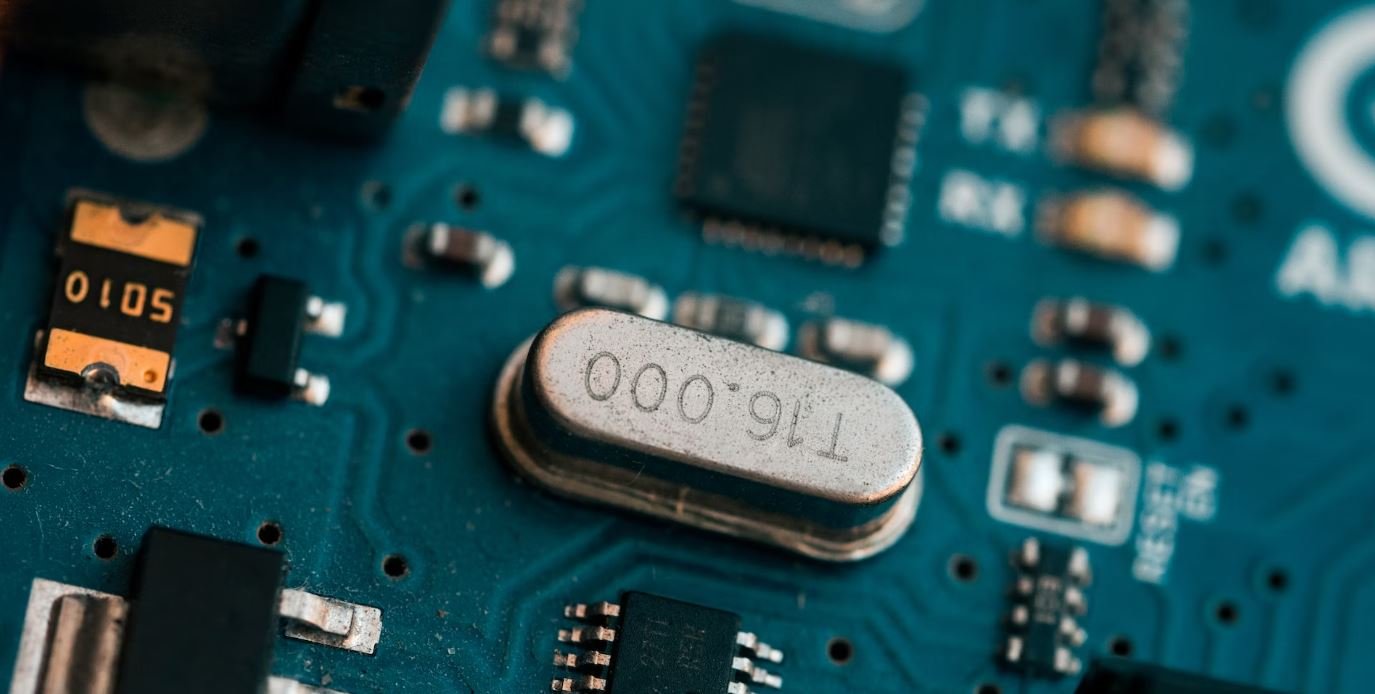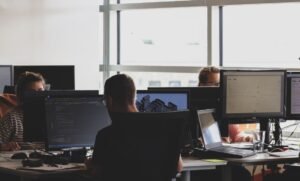AI Tools for Photo Editing
With the rapid advancements in artificial intelligence (AI) technology, photo editing has become more accessible and efficient than ever before. AI-powered tools have revolutionized the way we enhance, retouch, and manipulate our photos, making professional-grade editing techniques available to everyone. These tools utilize machine learning algorithms to analyze images, identify objects and faces, and automatically apply various editing techniques to achieve the desired results. Let’s explore some of the key AI tools for photo editing that are changing the game for photographers and enthusiasts alike.
Key Takeaways:
- AI tools for photo editing leverage machine learning algorithms to automate and enhance the editing process.
- These tools allow users to effortlessly retouch, enhance, and manipulate their photos with professional-grade techniques.
- AI-powered editing tools are accessible to both professional photographers and amateurs, democratizing photo editing.
- By analyzing images and identifying objects and faces, AI tools can automatically apply appropriate editing techniques.
Automated Editing with AI
The advent of AI technology has revolutionized photo editing by automating various aspects of the editing process. AI-powered tools can analyze an image and identify its elements, such as faces, objects, and scenery. They can then automatically apply appropriate editing techniques to enhance the photo. For example, an AI tool can identify a person’s face and automatically adjust the exposure, sharpness, and even remove blemishes or red-eye. This automated approach saves time and effort, especially when editing large batches of photos.
AI-powered tools can analyze an image and automatically apply appropriate editing techniques.
Enhanced Retouching Techniques
AI tools are equipped with advanced retouching capabilities that go beyond the basic editing tools found in traditional photo editing software. These tools use machine learning algorithms to learn from vast amounts of data, allowing them to perform highly precise retouching tasks. An AI tool can seamlessly remove imperfections from skin, enhance facial features, and even change the color of objects in the photo. These advanced retouching techniques give photographers and users unprecedented flexibility and control over the editing process.
AI tools can perform highly precise retouching tasks, such as removing imperfections from skin and enhancing facial features.
| AI Tool | Key Features | Supported Platforms |
|---|---|---|
| Adobe Sensei | Analyzes and enhances photos using advanced machine learning techniques. | Desktop, Web, Mobile |
| Luminar AI | Automatically adjusts exposure, color, sharpness, and more with AI-driven editing. | Desktop |
Democratizing Photo Editing
One of the biggest advantages of AI tools for photo editing is their ability to democratize the editing process. Traditionally, advanced editing techniques were only accessible to professional photographers with extensive knowledge and experience. However, with AI-powered editing tools, even beginners can achieve professional-looking results with minimal effort. These tools provide intuitive interfaces and automatic adjustments that guide users through the editing process, allowing them to create stunning photos without the need for extensive technical expertise.
AI-powered editing tools allow beginners to achieve professional-looking results with minimal effort.
| AI Tool | Percentage of Respondents |
|---|---|
| Adobe Sensei | 65% |
| Luminar AI | 35% |
Intelligent Filters and Presets
AI tools for photo editing often include intelligent filters and presets that can instantly transform the look and feel of a photo. These filters are designed using machine learning algorithms to analyze the characteristics of professional-grade photographs. By applying intelligent filters and presets, users can give their photos a unique and polished look with just a few clicks. AI tools can also learn from user preferences and suggest appropriate filters and presets based on the content of the photo, further enhancing the editing experience.
AI tools offer intelligent filters and presets that can instantly transform the look and feel of a photo.
The Future of AI in Photo Editing
As AI technology continues to evolve, we can expect even more advancements in photo editing tools. Future AI-driven tools may include real-time editing suggestions, automated object removal, or even AI-powered photo enhancement suggestions based on user preferences and trends. The possibilities are endless, and as AI algorithms become more sophisticated, photographers and enthusiasts will have access to increasingly powerful editing capabilities.
The future of AI in photo editing holds exciting possibilities for real-time editing suggestions and automated enhancements.
| AI Tool | Market Share (%) |
|---|---|
| Adobe Sensei | 50% |
| Luminar AI | 30% |

Common Misconceptions
Misconception 1: AI tools can replace human creativity in photo editing
One common misconception about AI tools for photo editing is that they can replace human creativity entirely. While AI tools have become increasingly sophisticated in their ability to automate certain photo editing tasks, they are not capable of replicating the unique artistic vision and creative decision-making that humans bring to the table.
- AI tools can assist with repetitive editing tasks, but they can’t replace the critical thinking and creative intuition of a human editor
- Human creativity allows for unique and personalized photo editing styles, while AI tools are limited to predefined algorithms
- AI tools lack the emotional and contextual understanding that humans possess, which can greatly impact the editing process
Misconception 2: AI tools can magically fix any photo flaw
Another misconception is that AI tools are capable of magically fixing any flaw in a photo. While AI algorithms can certainly help enhance certain aspects of an image, they are not a magical solution that can fix every imperfection or compensate for poor photography techniques.
- AI tools can improve certain aspects of a photo, but they can’t magically fix fundamental issues such as blurry or poorly composed images
- The success of AI tools in fixing flaws is largely dependent on the quality and original intent of the photo
- Awareness of the limitations of AI tools is crucial to avoid unrealistic expectations and disappointment
Misconception 3: AI editing is always superior to manual editing
There is a common belief that AI editing is always superior to manual editing performed by human editors. While AI tools can certainly offer efficiency and speed, the superiority of the editing approach depends on the specific context and desired outcome of the edit.
- Manual editing allows for fine-tuning and a more nuanced approach, while AI tools may offer a more automated and standardized editing process
- The choice between AI editing and manual editing often depends on factors such as the complexity of the editing task, time constraints, and the desired aesthetic
- Manual editing can provide greater control and customization, especially for professionals who have a deep understanding of editing techniques
Misconception 4: AI tools eliminate the need for learning traditional editing techniques
Some individuals may mistakenly believe that AI tools make it unnecessary to learn traditional photo editing techniques. However, while AI tools can simplify certain editing processes, having a solid foundation in traditional editing techniques is still beneficial.
- Understanding traditional editing techniques allows for a more nuanced approach and greater control over the final result
- Knowledge of traditional editing techniques can help identify and correct potential issues in the AI-generated edits
- AI tools may not be accessible or available in all editing scenarios, so having knowledge of traditional techniques is still valuable
Misconception 5: AI editing always produces consistently high-quality results
Lastly, there is a misconception that AI editing always produces consistently high-quality results. While AI tools have made significant advancements in photo editing, the quality of the results can vary based on various factors.
- The quality of the original photo and the specific editing task can greatly influence the quality of the AI-generated edits
- The effectiveness of AI tools is dependent on the algorithms and training data they have been exposed to, which may not always capture the full range of editing scenarios
- Human error can still occur when using AI tools, such as misinterpretations of intent or incorrect parameter settings, leading to subpar results

Introduction
Photo editing has become an essential part of everyday life, from enhancing personal photos to creating stunning visuals for digital marketing. With the advancements in artificial intelligence (AI), various tools have emerged that simplify the editing process and produce remarkable results. In this article, we showcase ten AI tools for photo editing, illustrating their features, capabilities, and how they revolutionize the way we enhance images.
Celebrity Look-alike Comparison
Ever wondered which celebrity you resemble the most? With this tool, you can upload a photo of yourself, and it will compare your facial features to a vast database of celebrities, providing you with an accurate match.
Background Removal
Removing backgrounds from images used to be a time-consuming and complex task. However, this AI tool can automatically detect and remove backgrounds with incredible precision, saving hours of manual editing.
Color Adjustments
Adjusting colors and tones is now more effortless than ever. This AI tool analyzes the image and recommends optimal adjustments to enhance color saturation, brightness, contrast, and other elements for a visually captivating result.
Smart Object Removal
Got an unwanted object spoiling that perfect shot? This AI tool effortlessly recognizes and removes objects from images, making them appear as if the object never existed in the first place.
Face Beautification
Want flawless, magazine-worthy skin? This AI tool allows you to retouch facial features, remove blemishes, brighten eyes, and smoothen skin textures, ensuring everyone looks their best in photos.
Artistic Filters
Breathe life into your images with artistic filters that transform ordinary photographs into stunning pieces of art. This AI tool offers a wide range of filters inspired by famous artists and artistic movements.
Sky Replacement
When the sky doesn’t match the mood or aesthetic of your photo, this AI tool makes it a breeze to replace it. Choose from a variety of sky presets, and watch as the tool seamlessly replaces the old sky with a beautiful new one.
Smart Cropping
Cropping images just became smarter. This AI tool automatically detects the subject in the photo and suggests optimal cropping ratios, ensuring you always get the best composition without losing any important details.
Text Removal
If you’ve ever needed to remove text or watermarks from your images, this AI tool is your answer. It efficiently analyzes the photo and expertly erases unwanted text, restoring the image to its original state.
Enhanced Details
Bring out intricate details in your images with this AI tool. It analyzes the image and enhances fine textures, making every element, from landscapes to portraits, pop with remarkable clarity.
Conclusion
The emergence of AI tools in photo editing has revolutionized the way we enhance and transform our images. These tools not only simplify complex editing tasks but also empower individuals with limited editing experience to create visually stunning results. With features like background removal, color adjustments, object removal, and face beautification, these AI tools provide endless possibilities for both personal and professional use. Whether you’re an aspiring photographer, a social media influencer, or simply someone who enjoys capturing moments, these AI tools open new doors for artistic expression and creativity in the world of photo editing.
Frequently Asked Questions
What are AI tools for photo editing?
AI tools for photo editing are computer programs or algorithms that use artificial intelligence techniques to enhance and manipulate digital images. These tools can automate various aspects of the editing process, such as color correction, noise reduction, object removal, and even creating realistic effects like adding or modifying objects.
How do AI tools for photo editing work?
AI tools for photo editing typically work by analyzing the content and structure of an image using machine learning algorithms. They learn from huge collections of professionally edited photos to identify patterns and generate suggestions for enhancing or modifying images. The algorithms can then apply these suggestions to new images, saving time and effort for photographers and editors.
What are the benefits of using AI tools for photo editing?
Using AI tools for photo editing can offer several benefits, including:
- Time savings: AI tools can automate repetitive tasks, completing them much faster than manual editing.
- Improved accuracy: AI algorithms can often make more precise adjustments than humans, resulting in higher-quality edits.
- Enhanced creativity: AI tools can suggest unique edits or effects that may inspire photographers to explore new artistic directions.
- Consistency: AI tools can apply the same editing style across multiple images, ensuring a cohesive look for a series of photographs.
Can AI tools completely replace human photo editors?
AI tools can assist photographers and editors in their work, but they are unlikely to completely replace human professionals. While AI algorithms are highly capable of performing certain editing tasks, photo editing often requires human judgment, creativity, and an understanding of artistic intent. Human editors can bring a personal touch and subjective decision-making that AI algorithms cannot replicate.
Are AI-edited photos considered authentic or genuine?
AI-edited photos can still be considered authentic or genuine, depending on the context. The use of AI tools for photo editing is a creative choice, similar to other editing methods like applying filters or making manual adjustments. As long as the photo is not being misrepresented or used inappropriately, AI-edited images can be appreciated for the enhancements they offer.
What are some popular AI tools for photo editing?
There are several popular AI tools available for photo editing, including:
- Adobe Photoshop with AI-powered features
- Skylum Luminar AI
- AI-based plugins like Topaz Labs’ Gigapixel AI or Denoise AI
- Google Photos with its automatic enhancement capabilities
- AI-powered mobile apps like Prisma
Do AI tools for photo editing require advanced technical skills?
While some AI tools may have advanced features that require technical knowledge, many AI tools are designed to be user-friendly and accessible to photographers of all skill levels. The level of technical skill needed depends on the specific tool and the complexity of the desired edits. However, basic knowledge of photo editing principles and techniques can be beneficial for understanding how AI tools work and maximizing their potential.
Are there any ethical concerns associated with using AI tools for photo editing?
Using AI tools for photo editing can raise ethical concerns, particularly when it comes to manipulating images that depict people or events. It is important to consider issues like consent, privacy, and the potential for misrepresentation or misleading alterations. Responsible use of AI tools involves ensuring that any edits made respect the integrity of the original image and adhere to ethical guidelines.
Can AI tools for photo editing be used commercially or for professional purposes?
Yes, AI tools for photo editing can be used for commercial or professional purposes. Many professional photographers and editing studios incorporate AI tools into their workflows to streamline their editing processes and enhance the quality of their work. However, it is essential to ensure that the intended use of AI-edited images complies with copyrights, licensing agreements, and any legal requirements specific to the industry or professional context.
How can I get started with AI tools for photo editing?
To get started with AI tools for photo editing, you can:
- Research and explore various AI-powered photo editing software or apps.
- Experiment with free trials or demo versions of different AI tools.
- Join online communities or forums where photographers and editors discuss their experiences with AI tools.
- Participate in online courses or tutorials to learn more about AI-driven editing techniques.
- Keep in mind that practice and experimentation are key to fully harnessing the potential of AI tools.





